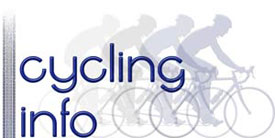I must have had about 9-10 different cycle computers, I seem to go through cycle computers quicker than I do bikes. As a bit of a statto I do like to know how far I’ve been and at what average speed. It’s useful to keep a training diary and record how far you’ve been. When training it’s good to have a vague idea of how fast you’re going. For example, when you do your first 10 mile TT in January in 27 minutes, at least you know, your usually this slow at this time of the year.
Looking back through the training diary, it can remind you of epic rides.
- Stow On Wold – 105 miles, 5:20:08, av. Sp 19.1 mph may not mean much to many, but it reminds me of a great ride 4 years ago. Just seeing that one line in the training book can recall memories of a ride long ago.
Cycle Computers can have their disadvantages, recently, I’ve been paying alot of attention to average speed. Finishing with an average speed of 21mph feels great. But, to maintain the high average, I’ve been choosing faster, busier roads. They are not that busy, but, if I didn’t have a speedo, at least sometimes, I would choose, quieter, hillier roads.
There was also a time when I would put down every single ride, in the training book, – even a 3 mile commute into town, but, when my computer on my commuting bike broke, I never replaced it. Somehow using a speedometer for a slow 3 mile commute into town doesn’t seem worth it. As a commuter I’ve become slower, especially since I started using a canal bank for the commute. When you’re going slow you don’t really want to be told, your doing 12mph.
I used to check the cycle computer at regular intervals during a ride, but, now pretty much ignore it until the end.
I’ve found cycle computers quite prone to breaking down, and the watch function is usually bad at keeping time. You really expect more from a £40 Cateye computer, but frequently you have to change time.
On my racing bike, I have a speedometer, but the clock is 1 hour 35 minutes late. Knowing it is this late, it’s always a mental challenge trying to work out my start time for a time trial, adding 1 hour 35 minutes onto my start time.
Although they might have the odd drawback, I see a cycle computer as a pretty indispensable item for any bike.
Cycle Computer on Time Trial Bike
I used to have a Cateye Strada on my Time trial bike. It was wireless, but quite bulky. Going for marginal gains on my time trial bike, I took it off and strapped a tiny watch (without strap) to just see time. I reckon this saves 3-4 Watts because of the lower aero drag. However, on other hand, there are some courses, where it useful to know how many miles you have done.
Cycle Computers I Recommend
- Cateye Strada Wireless – £44.99
- Cateye Vectra Wireless - £24.99 – one of the cheaper wireless computers, with enough functions and Cateye computers are quite easy to set up.
Cycle Computers Cadence
Cadence is a good function computers can give. Many cyclists would benefit from practising cycling at a higher cadence, you can count and look at a watch but it’s much easier with a computer. Cadence cycle computers use the rear wheel so they double up as a good tool for turbo trainer
- Cateye Strada – Cadence computer – £31.99
- All cateye Cycle computers at Wiggle
Heart Rate Monitor and Cycle Computer
- Polar CS100 review – Cycle computer integrated with heart rate monitor. Good combination of speed and heart rate. Don’t feel so bad when you’re speed plummets in a head wind, but heart rate and effort remain high!
Related
So speedometers can be fun, but don’t become a slave to them. ![]()

splash out and buy a garmin edge. all done on gps so no wires, easy to move from bike to bike and shows stuff like gradient and altitude. Connects to your pc too so you can see ride profiles and compare routes to previous rides. You can even race yourself over time trial courses and it constantly calculates how far in front or behind your last attempt at the course you are.
All in all it’s a great toy!